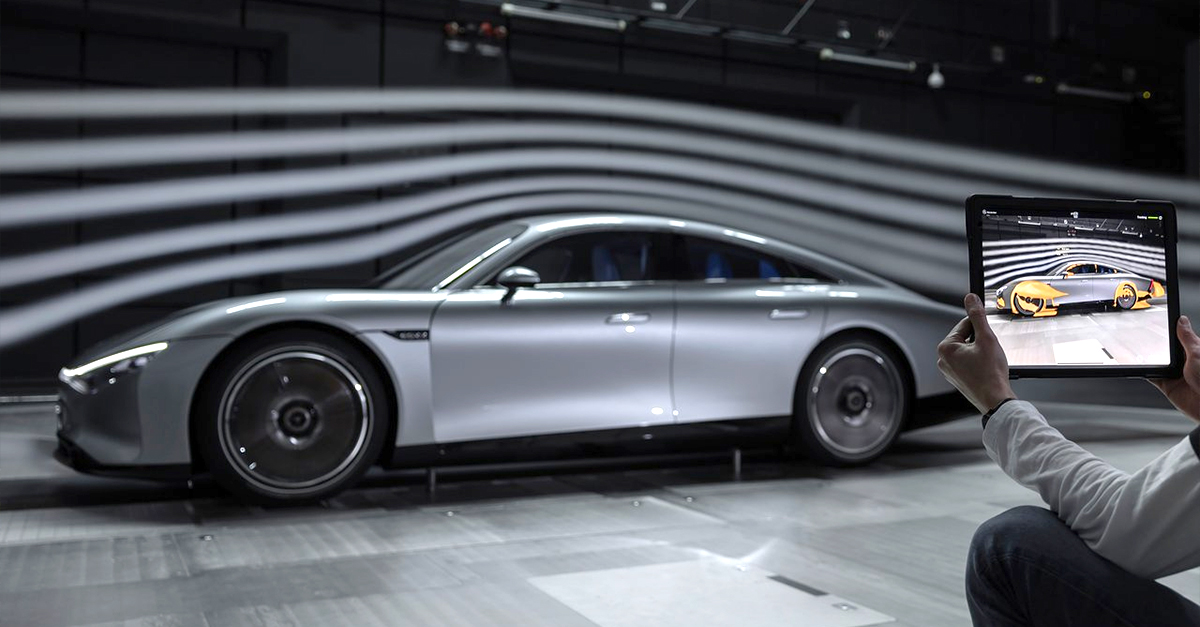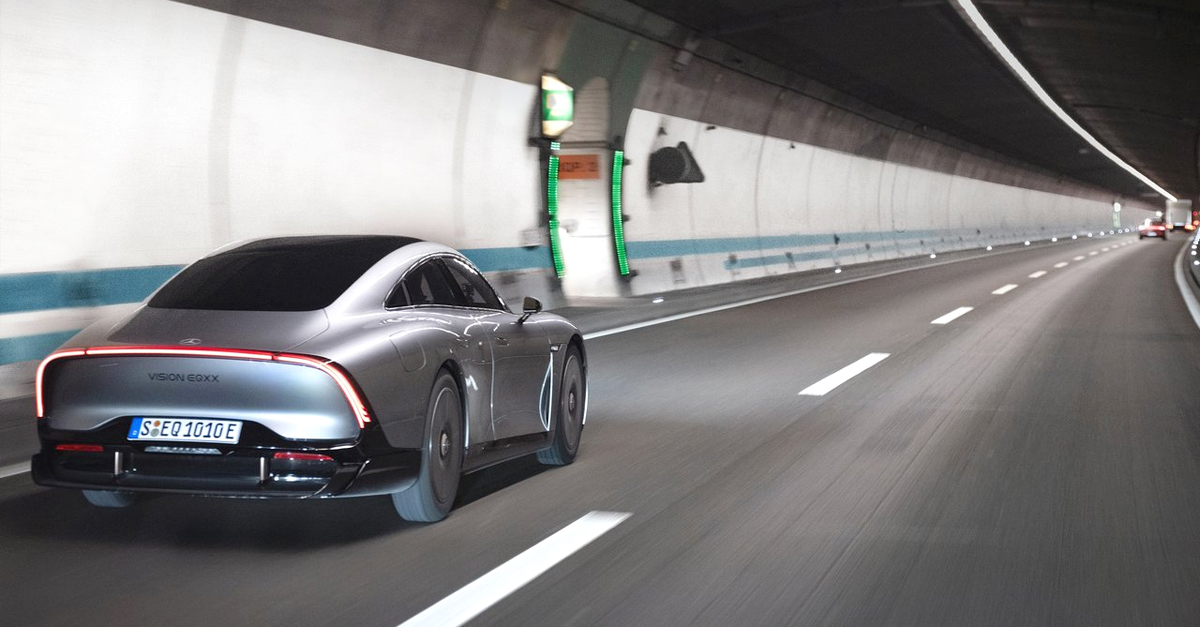The long European drive covered a range of driving conditions. The efficient concept car reached speeds of 87mph on the German autobahns before passing through the Alps. However, the journey was not all plain sailing as the EQXX was met with traffic jams in the latter stages of the trip.
Upon arriving at its destination 15% charge was left in the battery. This meant that on this particular trip the EQXX had a real-world range of about 713 miles.

The range displayed on this journey is more than double what many of the latest long-range EVs on the market can achieve. Much of the technology from this car will be utilised in Mercedes’ upcoming production cars from 2024.
A bigger battery is not completely responsible for the extended driving range, instead, Mercedes made use of lighter materials and a refreshed design to improve efficiency and aerodynamics. The battery holds around 100kWh and uses electrical architecture exceeding 900v.
Focus was largely invested in maximising the range rather than trying to generate high-performance statistics. An impressive drag 0.17Cd coefficient was achieved through narrowing the rear axle track and by using a retractable diffuser, amongst other methods.

3D printing allowed key components to be lighter whilst retaining the strength of a conventional part. This use of “bionic engineering” will be key in future Mercedes projects.
A roof solar panel also helped to squeeze an extra 15 miles of range out of the concept too.








